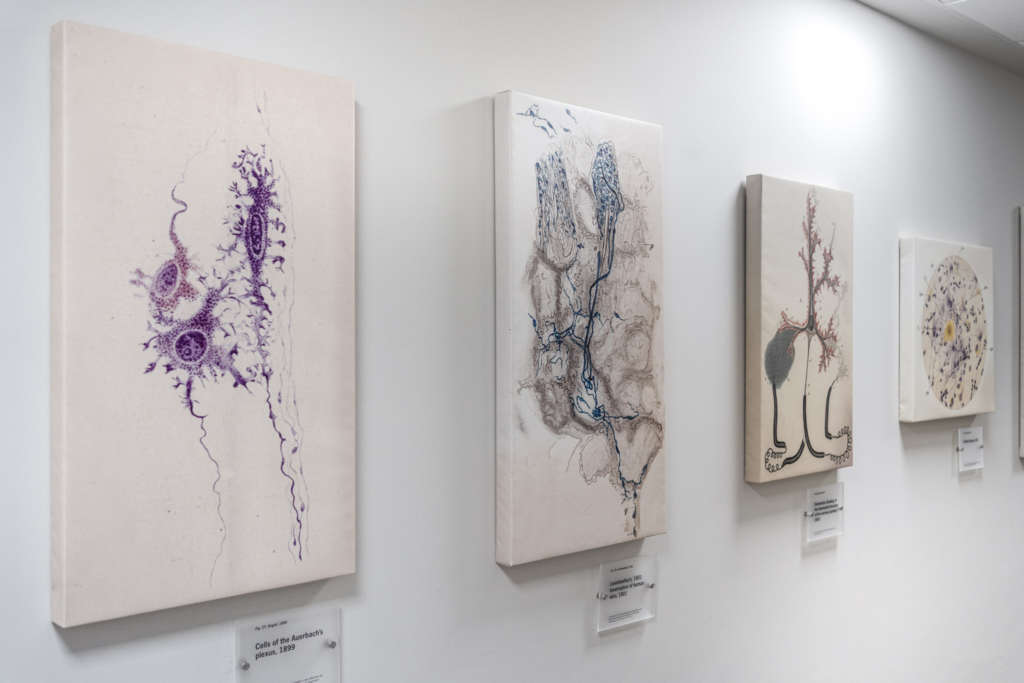Share This Article
Where do art and science meet? What parts of art do scientists have in their daily mission and, conversely, what can we see from science in art?
Carole Bellone, painter
Answer by Javier DeFelipe:
There are many instances in which art and science meet. From a neuroanatomical point of view, a clear example is the almost infinite number of neuronal forms with astonishing beauty that constitute the nervous system. Observing such beauty with such an extraordinary variety of shapes and colors provides an unlimited source of artistic and poetic inspiration to both scientists and artists. For a layperson, it is like visiting a museum of modern art exhibiting pieces from a range of different styles.

As for the second question, at present, it is not necessary to have artistic skills to be a scientist, since microphotography and other techniques commonly used in laboratories to illustrate observations are very well developed. In other words, there is no real need for an artistic touch or, to be more specific, scientists have no license for artistic interpretation.
On a different subject related to art, a scientist may wonder what the neurological basis of artistic creation is and why we need art to feel comfortable in our homes, workplaces, etc. It is interesting to ponder why, despite not needing beauty or an aesthetic perception to survive, almost everything that mankind creates is enhanced by a touch of art.

Biography:
Javier DeFelipe is a research professor at the Cajal Institute, in the Spanish National Research Council (CI-CSIC), and the Centre for Biomedical Technology (CTB) in the Polytechnic University of Madrid (UPM).
Since 2008, he leads the Cajal Cortical Circuitry Laboratory—a joint research between experimental neuroscientists from CI-CSIC and computer scientists from CTB. In 2009, DeFelipe also became director of the Cajal Blue Project, a multidisciplinary effort towards technological and computational advances in the field of neuroscience.

DeFelipe received his Ph.D. in Biology (Neuroanatomy) in 1979 from Complutense University of Madrid (Spain) and performed his postdoctoral training in Washington University School of Medicine, St. Louis (USA) and the University of California (Irvine). Since 1991, DeFelipe and his team are dedicated to understanding the microorganization and function of the human cortex and the alterations of cortical circuits in epilepsy and Alzheimer’s disease.
In 1997, he led the scientific Spanish team in the NASA Neurolab Spacelab mission, focused on the effects of microgravity in the nervous system.
Moreover, DeFelipe has being acknowledge for the study of the brain and art, authoring several books on this topic and organizing and curating exhibitions on neuroscience and art overseas —namely dedicated to the scientific “art” period and the influence of Santiago Ramón y Cajal in modern neuroscience. Some of his most acclaimed books are Cajal’s Butterflies of the Soul: Science and Art (2009), Cajal’s Neuronal Forest: Science and Art (2017) and El jardín de la neurología: Sobre lo Bello, el Arte y el Cerebro (2014, Spanish edition).

